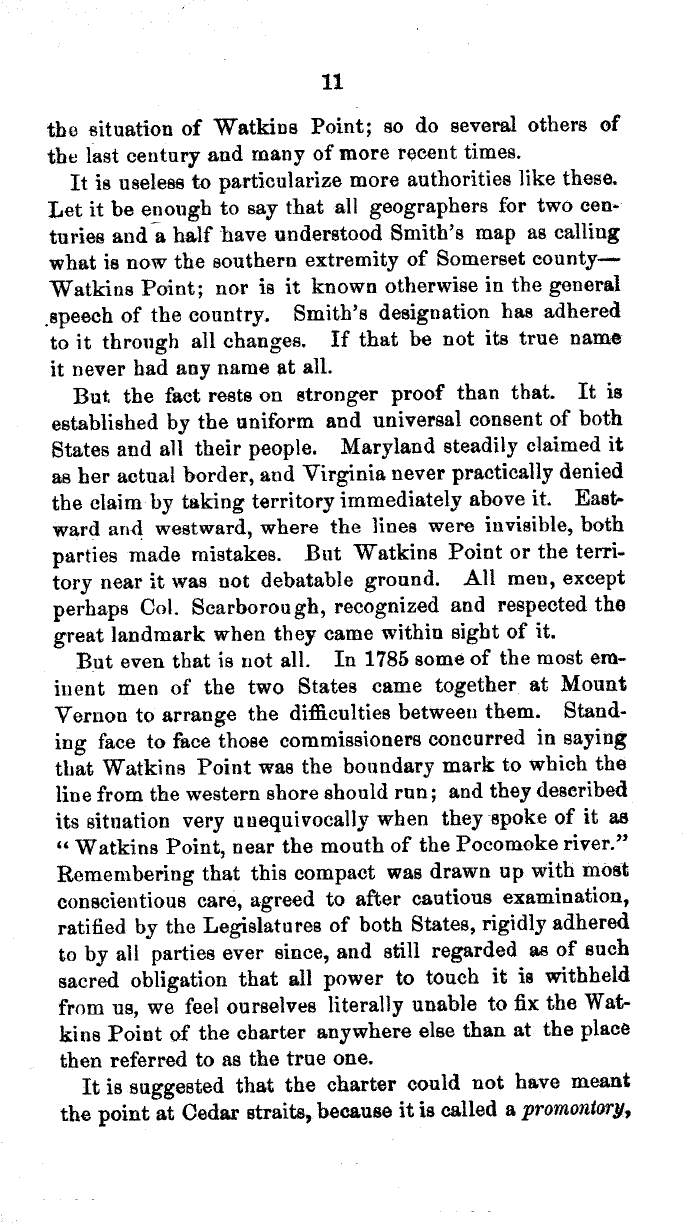| 11
the situation of Watkins Point; so do several others of
the last century and many of more recent times.
It is useless to particularize more authorities like these.
Let it be enough to say that all geographers for two cen.
turies and a half have understood Smith's map as calling
what is now the southern extremity of Somerset county--
Watkins Point; nor is it known otherwise in the general
.speech of the country. Smith's designation has adhered
to it through all changes. If that be not its true name
it never had any name at all.
But the fact rests on stronger proof than that. It is
established by the uniform and universal consent of both
States and all their people. Maryland steadily claimed it
as her actual border, and Virginia never practically denied
the claim by taking territory immediately above it. East-
ward and westward, where the lines were invisible, both
parties made mistakes. But Watkins Point or the terri-
tory near it was not debatable ground. All men, except
perhaps Col. Scarborough, recognized and respected the
great landmark when they came within sigbt of it.
But even that is not all. In 1785 some of the most em-
inent men of the two States came together at Mount
Vernon to arrange the difficulties between them. Stand-
ing face to face those commissioners concurred in saying
that Watkins Point was the boundary mark to which the
line from the western sbore should run; and they described
its situation very unequivocally when they spoke of it as
11 Watkins Point, near the mouth of the Pocomoke river."
Remembering that this compact was drawn up with most
conscientious care, agreed to after cautious examination,
ratified by the Legislatures of both States, rigidly adhered
to by all parties ever since, and still regarded as of such
sacred obligation that all power to touch it is withheld
from us, we feel ourselves literally unable to fix the Wat-
kins Point of the charter anywhere else than at the place
then referred to as the true one.
It is suggested that the charter could not have meant
the point at Cedar straits, because it is called a promontory,
|

